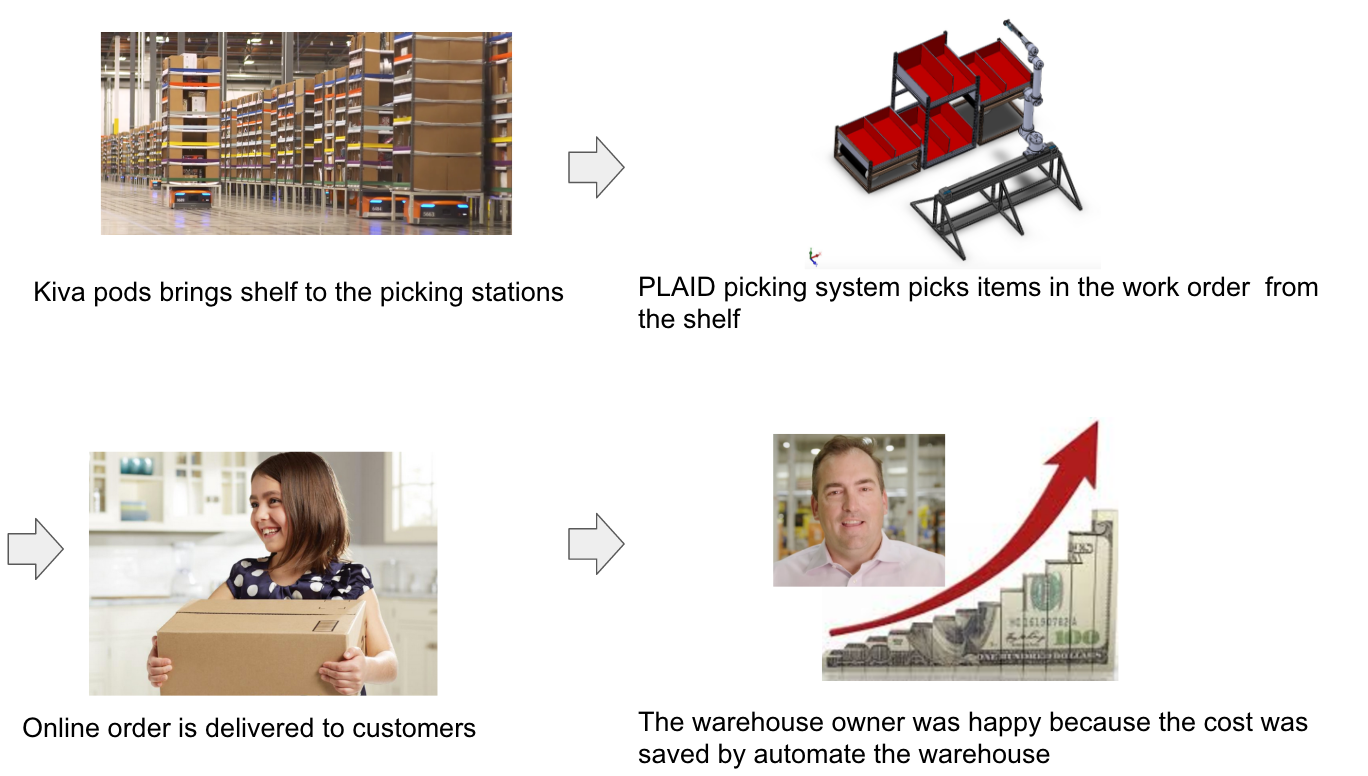
Joe Schmoe is the owner of a large ecommerce corporation. He is having trouble competing with other companies and is looking for a way to reduce the recurring cost of his warehouses.
Joe decides to purchase a PLAID robot in order to reduce the cost of labor at his warehouse. Joe assigns a technician to setup the robot. The technician clears the robot’s workspace, and Joe instructs his employees not to enter the robot’s workspace while it is working. The technician also makes sure that there is adequate lighting around the robot. In the course of about one half hour, Joe’s technician has connected the robot to the warehouse server and power. The robot is ready for picking and stowing.
Shelves are placed in front of the robot and the warehouse server orders the robot to pick or stow various items. The robot accepts this order and picks the appropriate item without any human intervention. For picking, the robot will search the specified bin for the desired item and move items that may be occluding the desired item. Once the item is located, the robot will grasp the item and place it in a tote that is mounted on the robot. After picking, the robot will update the warehouse server with the new location of any item that has been moved.
When Joe decides it is time for maintenance, he can instruct the robot to return to the home position and execute a complete stop.
The efficiency of Joe’s warehouse has been increased, which will help him save money and compete with other companies.
